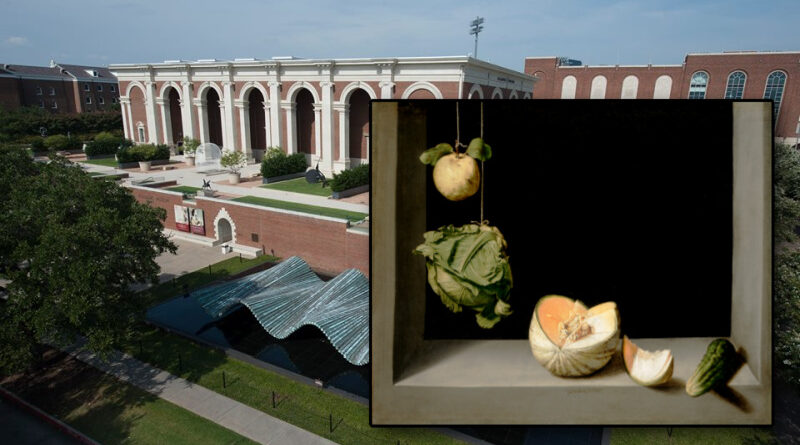SMU Celebrates Spanish Art With Masterpiece in Residence
SMU’s Meadows Museum launched an exhibition and research initiative designed to demonstrate and celebrate the significant holdings of Spanish art in American museum collections while increasing contributions to scholarship in the field of Spanish art.
Titled Masterpieces in Residence, the program is a series of individual installations of a single work of Spanish art on loan to the Meadows Museum from a U.S. museum. Each Masterpiece in Residence loan provides the occasion for the commissioning of a focused essay on the work by a leading scholar, which will be published as a short monograph by the Meadows Museum in association with Scala Arts Publishers, Inc.

The first work, Juan Sánchez Cotán’s Still Life with Quince, Cabbage, Melon, and Cucumber (c. 1602), on loan from the San Diego Museum of Art and currently on view, will remain at the Meadows Museum through June 26. Dr. Peter Cherry, professor in the Department of Art and Architecture at Trinity College Dublin, wrote the essay for the accompanying publication. The second loan in the series will be announced in the coming months.
Designed to encourage prolonged engagement with an individual work of art, the program was initiated by Mark A. Roglán, the renowned director of the Meadows Museum who passed away from cancer late last year after 20 years at the helm of the institution. While the Meadows Museum is widely recognized as the leading U.S. institution focused on the study and presentation of the art of Spain, Roglán wanted to promote the breadth and depth of Spanish art collecting at other museums across the country. Roglán and his colleagues were interested in the dialogues that would be generated by displaying these works in the context of the Meadows Museum’s own collection.
The first work in the series, Sánchez Cotán’s Still Life with Quince, Cabbage, Melon, and Cucumber, is considered to be one of the first masterpieces of still-life painting. Sánchez Cotán (1560–1627) was one of the first artists to paint in the genre, and this work set a precedent of the highest standard for the Spanish still-life painting of the later Baroque period. The painting depicts fruit and vegetables carefully arranged within the niche of a larder. Lauded for his ability to reproduce observed reality, Sánchez Cotán’s skill is reflected in his masterful use of negative space, foreshortening, and depiction of light and shadow.
“The art historical importance of the still life, as well as its beauty, makes it an ideal work to launch the Meadows Museum’s Masterpiece in Residence series,” Amanda W. Dotseth, director ad interim and curator at the Meadows Museum, said of the painting.
The Meadows Museum does not have a work by Sánchez Cotán in its collection, in part due to the artist’s brief career — he took religious orders in 1603. At the Meadows Museum, the rare painting can be studied alongside other Spanish still lifes currently on view, including Juan de Arellano’s Still Life with Flowers, Peaches, and Red Plums and Still Life with Flowers, Pears and Other Fruits (c.1670-75). Also on view are other diverse examples of the genre, from Pedro de Camprobin Passano’s paintings (such as Bouquet with Lilies, Roses and Curtain on the Left, 1664) to a modern interpretation by Picasso (Still Life in a Landscape, 1915). Sánchez Cotán’s direct influence can also be seen in paintings by his follower Juan van der Hamen y León: Virgin and Child in Glory (c.1628-30) and Christ Child Appearing to Saint Anthony (c.1628-30).








